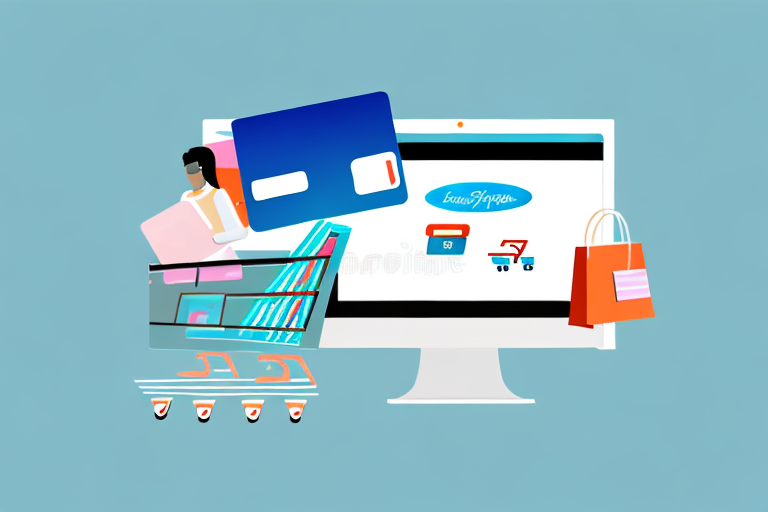Introduction to Payment Processing
Payment processing is a critical component of the e-commerce ecosystem, enabling seamless transactions between buyers and sellers. It encompasses the procedures and technologies that facilitate the transfer of funds from a customer's account to a merchant's account through secure online platforms. As e-commerce continues to grow, understanding the nuances of payment processing becomes essential for businesses aiming to thrive in the digital marketplace.
The Importance of Payment Processing in E-Commerce
Effective payment processing is the backbone of successful online businesses. It ensures that transactions are secure, reliable, and efficient, fostering trust between customers and merchants. According to a Statista report, global e-commerce sales reached approximately $5.7 trillion in 2022, highlighting the significance of robust payment systems in handling vast transaction volumes.
Moreover, streamlined payment processing reduces the risk of fraud and chargebacks. Advanced payment systems equipped with fraud detection tools can identify and mitigate suspicious activities, safeguarding both merchants and customers. This security not only protects financial interests but also enhances the overall customer experience, leading to increased loyalty and repeat business.
Payment Methods and Gateways
Types of Payment Methods
E-commerce platforms offer a variety of payment methods to cater to diverse customer preferences:
- Credit and Debit Cards: These remain the most prevalent, accounting for over 50% of online transactions globally.
- Digital Wallets: Services like PayPal, Apple Pay, and Google Wallet provide secure and convenient payment options.
- Bank Transfers: Suitable for high-value transactions, offering reliability and security.
- Cryptocurrencies: Emerging as a popular alternative, cryptocurrencies like Bitcoin and Ethereum offer decentralized and secure payment options.
How Payment Gateways Work
A payment gateway acts as an intermediary between the merchant's website and the financial institutions involved in the transaction. It securely encrypts sensitive data, such as credit card information, and facilitates the authorization and settlement of payments. According to PYMNTS, the adoption of payment gateways has streamlined the transaction process, reducing latency and enhancing security measures.
Key functions of payment gateways include:
- Data Encryption: Ensuring that sensitive information remains secure during transmission.
- Transaction Authorization: Verifying the validity of payment details before processing.
- Settlement: Facilitating the transfer of funds from the customer's account to the merchant.
Selecting the Right Payment Processor
Choosing an appropriate payment processor is pivotal for optimizing both customer experience and business operations. Factors to consider include:
- Payment Methods Supported: Ensure the processor supports a wide range of payment options to accommodate different customer preferences.
- Fee Structure: Compare transaction fees, setup costs, and any hidden charges to find a cost-effective solution.
- Security Features: Look for processors that offer robust security measures like PCI compliance and fraud detection.
- Integration Capabilities: The processor should seamlessly integrate with your e-commerce platform, whether it's Shopify, WooCommerce, or Magento.
- Customer Support: Reliable and responsive customer service is essential for resolving any payment-related issues swiftly.
Reputable sources such as Business News Daily provide comprehensive reviews and comparisons of popular payment processors, aiding businesses in making informed decisions.
Security and Fraud Prevention
Implementing Robust Security Measures
Security is paramount in payment processing to protect against data breaches and financial fraud. Essential security measures include:
- SSL Encryption: Secures data transmission between the customer's browser and the merchant's server.
- PCI DSS Compliance: Adhering to the Payment Card Industry Data Security Standard ensures that payment data is handled securely.
- Multi-Factor Authentication (MFA): Adds an extra layer of security by requiring multiple forms of verification before granting access.
- Tokenization: Replaces sensitive data with unique tokens, reducing the risk of data exposure.
Managing Chargebacks
Chargebacks occur when customers dispute a transaction, leading to a reversal of funds. Effective chargeback management includes:
- Clear Communication: Providing detailed product descriptions and transparent return policies to reduce disputes.
- Transaction Verification: Implementing systems to verify the legitimacy of each transaction.
- Prompt Response: Addressing chargeback notices quickly with appropriate evidence to contest unwarranted disputes.
Resources like the Federal Trade Commission offer guidelines on handling chargebacks effectively.
Best Practices for Payment Processing
Adhering to best practices ensures a smooth and secure payment experience for both merchants and customers:
- Optimize the Checkout Process: Simplify the checkout experience by minimizing the number of steps and providing a guest checkout option.
- Transparent Pricing: Clearly display all fees and charges to avoid unexpected costs that may deter customers.
- Mobile Optimization: Ensure that the payment process is seamless on mobile devices, as mobile commerce continues to rise.
- Continuous Monitoring: Regularly review and update security measures to protect against evolving threats.
- Provide Multiple Payment Options: Offering a variety of payment methods caters to different customer preferences, increasing the likelihood of completing a sale.
Implementing these practices can significantly enhance customer satisfaction and boost conversion rates.
Future Trends in Payment Processing
The payment processing landscape is rapidly evolving, driven by technological advancements and changing consumer behaviors. Key trends to watch include:
- Artificial Intelligence and Machine Learning: AI-powered systems are enhancing fraud detection and providing personalized payment experiences.
- Contactless Payments: The adoption of NFC and other contactless technologies is growing, offering faster and more secure transactions.
- Blockchain Technology: Blockchain offers decentralized and transparent transaction processes, potentially revolutionizing payment systems.
- Biometric Authentication: Utilizing fingerprints, facial recognition, and other biometric data to authenticate transactions increases security.
- Cryptocurrency Integration: More e-commerce platforms are beginning to accept cryptocurrencies, broadening payment options for customers.
Staying abreast of these trends allows businesses to adapt their payment strategies and maintain a competitive edge in the market.
Conclusion: Best Practices for Optimizing Your E-Commerce Payment Processing System
Optimizing your e-commerce payment processing system is essential for ensuring secure, efficient, and customer-friendly transactions. By prioritizing security, offering diverse payment options, and adhering to best practices, businesses can enhance the overall shopping experience and build customer trust. Additionally, keeping up with emerging trends and technological advancements will enable businesses to stay competitive and meet the evolving needs of the digital marketplace. Implementing a robust payment processing system not only drives sales but also fosters long-term growth and success in the dynamic world of e-commerce.




















